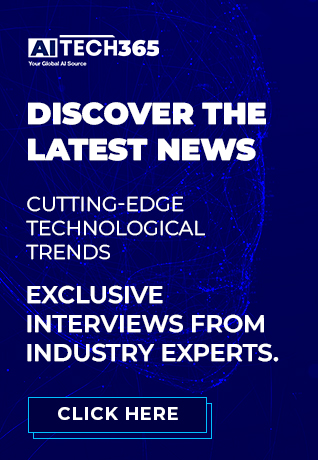AI chatbots started as nothing more than a shiny consumer toy, but now they are used for making decisions at the highest corporate levels regarding their safe and large-scale use. This is no longer a playground for clever demos. Enterprises now judge AI not just by response speed, but by compliance, data control, and return on trust.
At the front of this race stand two distinct players. OpenAI, the scaling powerhouse with Microsoft’s full backing, is building an unmatched ecosystem that connects AI to real business pipelines. Anthropic, the safety-first specialist, anchors its progress in Constitutional AI, designed to make systems more predictable and aligned with human values.
The real story isn’t about who wins, but who serves best. OpenAI leads where speed, integration, and reach matter most. Anthropic leads where governance, reliability, and accountability decide the deal.
The State of Play in Enterprise AI Competition
OpenAI and Anthropic aren’t just rivals; they represent two playbooks shaping how enterprises adopt artificial intelligence. OpenAI has moved fast, scaled wide, and built deep roots in the Microsoft ecosystem. It’s not just about the models, it’s about reach. With more than one million businesses using its platform globally, OpenAI has become the fastest-growing business platform in history. That growth isn’t slowing either, with over seven million ChatGPT for Work seats and enterprise subscriptions up nine times year over year. This shows how OpenAI turned first-mover advantage into a living ecosystem where speed meets accessibility.
Anthropic, on the other hand, has played a longer game built on trust, governance, and thoughtful scale. The company’s approach, backed by its Anthropic Economic Index launched in September 2025, zeroes in on where AI truly fits within enterprises. Its models are designed for reliability and ethical clarity, which explains why industries like finance, law, and government are taking notice. While OpenAI wins on integration and volume, Anthropic’s focus on safety-first frameworks makes it the preferred choice for organizations that can’t afford risk.
Together, they define the real frontier of enterprise AI competition, speed versus safety, scale versus stability.
Capability Showdown Between OpenAI and Anthropic
In the area of model performance, OpenAI and Anthropic are competing but in a different way. GPT-4o gives the impression of a very fast train that is designed for high volume, whereas Claude 3.5 Sonnet and Opus are akin to ever-focused strategic thinkers, even during extensive reasoning they do not lose their focus. In benchmarks like MMLU and GPQA, Anthropic’s models often pull ahead in complex, graduate-level reasoning where structured logic and reliability matter. OpenAI, on the other hand, dominates in response speed and multimodal performance, blending text, image, and voice inputs with near-seamless precision. For enterprises, this difference defines choice. GPT-4o is the go-to for real-time analytics and instant customer interactions, while Claude models deliver superior control and consistency in high-stakes decision-making. This contrast sits at the heart of the ongoing enterprise AI competition.
Developers see this divide clearly in coding workflows. OpenAI’s GPT models are built for speed and iteration, perfect for short coding bursts, automation, or quick debugging. Anthropic’s long-context reasoning changes the game for teams working on intricate systems or older codebases that need deep understanding. On coding benchmarks such as HumanEval and SWE-bench, Claude’s extended context window helps it reason through logic chains instead of just completing code lines. It doesn’t just generate output, it interprets intent.
Then there’s the context window advantage. Anthropic’s 200,000-plus token capacity lets enterprises feed entire legal documents, policy frameworks, or research archives into a single session. That kind of memory gives industries like law, finance, and healthcare an edge in managing complex information flows. OpenAI’s tighter window, though, offers faster throughput, ideal for dynamic environments where speed beats recall.
In short, OpenAI is built for momentum while Anthropic is built for endurance. One powers rapid deployment, the other powers thoughtful precision. The real winners are enterprises smart enough to match the right model to the right mission.
Also Read: How Microsoft Uses AI to Drive Enterprise Productivity
The Cost Equation in Pricing, Tokenomics and TCO
Cost has become the quiet battleground in how enterprises choose between OpenAI and Anthropic. Both run on token-based pricing, where every input and output token has a cost attached. Top-tier models like GPT-4o and Claude 3.5 Opus deliver premium reasoning and multimodal power, but that intelligence comes at a higher price per token. The lighter, speed-optimized versions such as GPT-3.5 or Claude Haiku cater to routine workloads where scale and speed matter more than nuance. This mix gives enterprises flexibility but also forces them to plan usage carefully to avoid runaway expenses.
Efficiency plays a big role too. OpenAI’s Batch API, for instance, can significantly cut costs for large asynchronous jobs like report generation or content classification. By queuing tasks for scheduled processing instead of on-demand calls, companies can achieve predictable billing and better cost control. This feature is especially valuable for organizations managing thousands of daily API interactions where predictability beats instant response.
Total Cost of Ownership tells an even deeper story. For companies already anchored in the Microsoft ecosystem, OpenAI integrates smoothly through Azure, cutting overhead and simplifying procurement. That synergy can lower both financial and operational friction. Anthropic, meanwhile, usually starts with higher upfront costs due to its custom enterprise plans and stricter compliance processes. Yet, its safety-first design can offset future risks tied to data breaches or non-compliance penalties.
In the end, cost isn’t just about pricing. It’s about predictability, integration, and long-term trust, three levers that define real enterprise value.
The Trust Factor in Compliance, Safety and Governance
In a competition where speed tends to get all the attention, trust in a subtle way, becomes the major factor. Anthropic has relied upon its Constitutionally Guided AI, a Model training system that operates with written ethical principles instead of the trial-and-error reinforcement method. It is, therefore, a system that acts predictably and is less distanced from human intent. This user-friendly approach has made Anthropic the best choice for companies operating in the high-stake fields of finance, law, and government that cannot risk being caught off guard by compliance.
OpenAI takes a different route but lands in the same trust zone. Its enterprise products are now fortified with strict privacy and control guarantees. As the company states, it does not train its models on business data by default, and clients own and control their information. Add a completed SOC 2 audit and encryption standards like AES-256 and TLS 1.2+, and OpenAI’s compliance framework becomes a major comfort factor for risk-averse sectors.
When it comes to explainability and auditability, both firms face the same challenge. AI systems are still black boxes in many ways, but Anthropic’s focus on transparency and consistent behavior gives it a conceptual edge. OpenAI, on the other hand, benefits from Microsoft’s Azure ecosystem, where data residency and HIPAA compliance make it a go-to option for regulated industries.
As the enterprise AI competition intensifies, trust may soon outweigh sheer capability. In markets where a single data breach can derail reputation and value, governance is not a box to tick but a moat to build.
End Note
If you disregard the noise and examine the basics, OpenAI is still the winner in terms of quickness, easy use, and ecosystem domain. The collaboration with Microsoft provides OpenAI with a distribution advantage that no other company can come close to. With more than 1,000 real-life examples of how organizations are applying Microsoft’s AI capabilities, and 25,000 paid customers using Microsoft Fabric, the integration story writes itself.
Anthropic, on the other hand, has carved its own niche in depth and discipline. It is the models of the company that are always in the front line of the battle especially in environments where reasoning and compliance are the dominant factors such as the cases where accuracy and reliability are valued over raw throughput.
The future is such that the true victors will not be the vendors but those corporations that manage to achieve the right mixture of reliance and flexibility. A multi-model strategy using Claude for complex analysis and GPT for customer-scale engagement is the smarter play. The dual-winner dynamic isn’t competition, it’s co-evolution.





